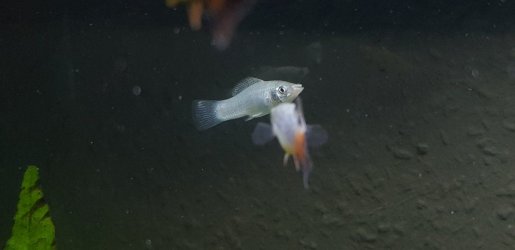Doing small water changes is pretty much pointless if you are trying to dilute nutrients like ammonia and nitrite. You are better off doing a 75% water change to dilute stuff because it is much more effective.
You do water changes for 2 main reasons.
1) to reduce nutrients like ammonia, nitrite & nitrate.
2) to dilute disease organisms in the water.
Fish live in a soup of microscopic organisms including bacteria, fungus, viruses, protozoans, worms, flukes and various other things that make your skin crawl. Doing a big water change and gravel cleaning the substrate on a regular basis will dilute these organisms and reduce their numbers in the water, thus making it a safer and healthier environment for the fish.
If you do a 25% water change each week you leave behind 75% of the bad stuff in the water.
If you do a 50% water change each week you leave behind 50% of the bad stuff in the water.
If you do a 75% water change each week you leave behind 25% of the bad stuff in the water.
Fish live in their own waste. Their tank and filter is full of fish poop. The water they breath is filtered through fish poop. Cleaning filters, gravel and doing big regular water changes, removes a lot of this poop and makes the environment cleaner and healthier for the fish.
------------------------
Any ammonia is going to be more toxic in water with a pH above 7.0, and the higher the pH, the more toxic it becomes.
You should do a 75% water change and gravel clean the substrate any day the ammonia or nitrite is over 0, or the nitrate is over 20ppm. However, if you have 30 or 40ppm nitrate in your tap water, that is as low as the tank will get to.
------------------------
Our filter.is less than 6 weeks, but we've been changing the sponges in it as recommended by the sponge brand.
Some companies suggest replacing filter media/ materials every week or two when you clean the filter. This is a marketing gimmick that encourages you to keep buying products from them. It also screws up the filter cycle.
Colonies of beneficial bacteria develop on the filter pads/ cartridges and these normally keep the ammonia and nitrite levels at 0. If you replace these pads, you get rid of the good bacteria and start the cycling process all over again. The cycling process usually takes 4-6 weeks and is where the filter develops the good bacteria.
Your best bet is to get some sponges from another brand of filter (I use AquaClear sponges but there are other brands), and cut them with a pair of scissor so they fit in your filter. You can then squeeze the sponges out in a bucket of tank water to clean them, and re-use them. Sponges will last for years and many people are still using the same filter sponges 10 years after they bought them.
You can also get round/ cylindrical sponges for some brands of internal power filter. These round sponges have a hole through the centre and they fit over the intake strainer of most external power filters. Again, you clean the round sponge by squeezing it out in a bucket of tank water.
If you add sponges to the filter, leave the old filter pads in there too for at least 4 (preferably 6 weeks), then throw the pads away and just leave sponges in the filter.
------------------------
Does your tap water have nitrites or nitrates in?
Tap water in some countries has nitrates in, but it should not have nitrites in. If you have nitrites in the tap water, you need to contact the health department and inform them because nitrite and nitrates cause cancer. Low levels of nitrates are considered safe for people to ingest, but only time will tell if that is correct.
If you do have nitrates in the tap water, you can get a Pozzani Filter to remove the nitrates, or put the water into a plastic storage container with some floating plants, and the plants will use the nitrates and get rid of them. Then you use the clean water for the fish tank.
There's a couple of threads on this forum about Pozzani Filters. You can use the search function on the top right of the screen to look for them.
------------------------
The dead fish might have been eaten by the other inhabitants, but it could also be rotting away underneath an ornament, wood or among the plants. Have a good look for it and lift items up to check in and under them.
You should do a 75% water change and gravel clean any time you lose a fish or if the fish get sick.
------------------------
You need to find out exactly what the GH of your water is, and what measurement it is in (eg: ppm or dGH). Mollies need a pH above 7.0 and GH around 250ppm and struggle if the GH is under 200ppm.
Platies like water with a pH above 7.0 and a GH around 200ppm.
Gouramis, plecos and glass catfish come from soft water with a pH below 7.0 and a GH below 150ppm.




